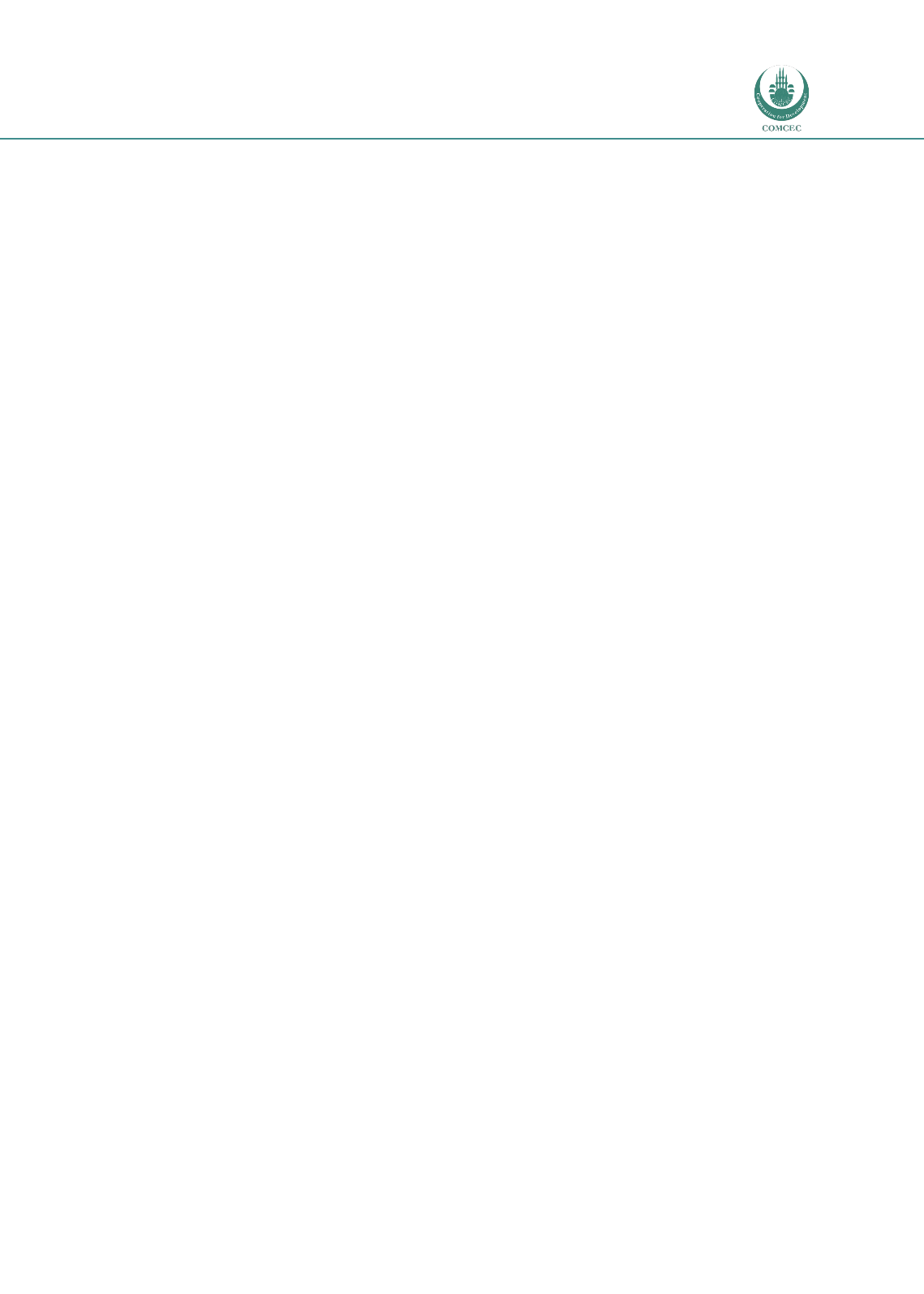

Promoting Agricultural Value Chains
In the OIC Member Countries
51
In the Asian OIC Member Countries, a broad distinction can be made between Central and
South Asian economies. In Central Asia the main crop for self-sufficiency is wheat. For instance,
Iran has promoted self-sufficiency in agricultural production since the Islamic Revolution in
1979. To this purpose, a guaranteed price is provided for more than 20 agricultural crops, with
wheat and rice being the most important. In 1999, the government initiated a special
programme for wheat self-sufficiency for wheat by increasing production through input
subsidies, improved seeds, mechanisation, and farmer training. The implementation of this
strategy and the guaranteed price support is likely to have contributed to an increase in wheat
production, and Iran went from being the 16
th
largest wheat producer when the programme
was launched to the 12
th
leading producer of wheat in the world in 2012 (FAO, 2014b).
In South Asian OIC Member Countries, rice is the most important crop for food self-sufficiency
in line with the importance of rice for domestic supply and costs of imports. Countries such as
Indonesia and Bangladesh have devoted large portions of their agricultural resources to the
production of rice, and are the worldwide 3
rd
and 4
th
largest producer countries, respectively.
For Indonesia, rice self-sufficiency is even the priority objective of its agricultural policies.
Different policy mechanisms to protect and promote domestic production of food security
crops can be identified in OIC countries.
Producer subsidies
. Different OIC Member Countries subsidise inputs, equipment and seed
distribution. For instance, Benin and Mali have launched government programmes to
distribute free seeds, subsidised fertiliser and irrigation equipment for rice producers.
Fixed prices
. Many OIC Member Countries have fixed prices for certain crops to limit high food
prices. For example, Senegal and Cote d’Ivoire have guaranteed producer prices for rice to
encourage production and to reduce their dependency on rice imports (Senegal typically
imports about 70 percent of its rice for domestic consumption). In Pakistan, the government
controls the wheat market through a guaranteed minimum support price to producers and an
issue price for wheat sold to flour mills.
Government control
. In a number of OIC countries, government plays a dominant role in the
processing and marketing of strategic agricultural products. In Saudi Arabia and Egypt, mills
are almost exclusively owned by the state. In Syria, the government is the sole buyer of wheat
and controls all marketing channels. Also in Egypt, the state is the primary purchaser of wheat
and buys the produce from farmers at prices above the prevailing world price. In Iran, mills are
privately owned but the state is the exclusive buyer of flour.
Import duties
. The majority of OIC countries have established high import tariffs on key
commodities to protect domestic producers. For instance, many OIC countries have high
barriers for wheat imports, including tariff barriers and sales tax. This protects local producers
but also effectively allows the domestic price above the international market price.
Export restrictions.
Some OIC Member Countries have established legislative barriers to
control, restrict, or even eliminate the exports of cereal staple crops. For instance, in
Bangladesh exports of non-fragrant rice are banned and exports of fragrant rice require official
permissions. In Egypt, rice exports are frequently banned such as in 2008, 2009, 2011, 2013
and 2014, with unclear prospects for the future (USDA, 2014a). In West Africa, seasonal bans
to grain exports are often not an official act or decree, but politically motivated decisions to
meet public concerns of rising food prices and hunger, and to garner support for politicians in
elections (Ngo-Eyok, 2013).

















